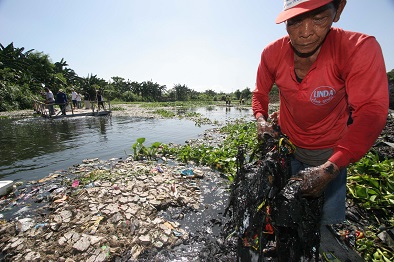Water, Climate and Development Programme for Southeast Asia
Southeast Asia is one of the most dynamic, fast growing regions in the world today. But with long coastlines, population and economic activity concentrated in coastal areas, reliance on agriculture in providing livelihoods for a large segment of the population—especially those living in poverty—and dependence on natural resources and forestry to drive development, it is highly vulnerable to the harsh impact of climate change.
As one of the world’s most dynamic regions, the study shows that rapid economic growth in past decades has raised large numbers of people out of the extreme poverty trap in Southeast Asia. But incidence of income and non-income poverty is still very high, and achieving Millennium Development Goals (MDG) remains a daunting task. If not addressed adequately, climate change would have serious negative consequences for the region’s sustainable development and poverty eradication policies and agenda.
Climate change is already affecting Southeast Asia with rising temperature, decreasing rainfall, rising sea levels, increasing frequency and intensity of extreme weather events leading to massive flooding, landslides and drought causing extensive damage to property, assets, and human life. Climate change is also exacerbating the problem of water stress, affecting agriculture production, causing forest fires, degrading forests, damaging coastal marine resources, and increasing outbreaks of infectious diseases.
By building climate resilience, the initiative will contribute to peace building and conflict prevention, support ASEAN integration and help safeguard investments in economic development, poverty reduction and the Millennium Development Goals (MDGs).
The initiative intentionally aims to strengthen global-regional-national linkages. The programme will take the lessons learned at the national level into regional and global discussions on climate change adaptation. Efforts will be made to ensure that planning at the national and regional level is informed by the latest analyses and processes on the global level
Goal and Objectives
The goal of the programme is to integrate water security and climate resilience in development planning processes, build climate resilience and support countries within Southeast Asian Region to adapt to a new climate regime through increased investments in water security. By building climate resilience, the initiative will contribute to peace building and conflict prevention, support integration and help safeguard investments in economic development, poverty reduction and the Millennium Development Goals (MDGs) and post 2015 Sustainable Development Goals.
The objectives of the programme are to support countries in:
• The achievement of the UNFCCC national adaptation plan (NAPs) process .
• The development of adaptive capacity and resilience to reduce the vulnerability of the climate change impacts.
• The integration of climate change adaptation in development planning processes and strategies.
Expected Outcomes
• Regional Economic Communities River Basin Organisations (RBOs) and governments advance regional cooperation in climate change adaptation in trans boundary waters and shared aquifers for regional and economic development
• Countries integrate water security and climate resilience into national development planning, decision-making processes
• Stakeholders at all levels develop gender sensitive ‘No/low Regrets’ investments and financing strategies
• Governments enhance efficiency in Project preparation to leverage funding from traditional sources of water financing and adaptation funds
• Stakeholders develop and implement innovative pro-poor and gender sensitive ‘green ‘solutions for addressing critical water security challenges such as water, food, and energy, to enhance climate resilience of countries and communities
• Institutions and stakeholders have enhanced capacity to develop no/low regrets investment and integrate water security and climate resilience in development plans
• Institutions and stakeholders have access to and use information and knowledge on how to enhance water security and climate resilient development
• Regional/ country level partnerships’ have enhanced competencies in fund raising, project coordination, financial management, stakeholder engagement, monitoring and evaluation
Goal and Work Package
Goal 1: Catalyze change in policy and practice
Work Package 1: Regional and Trans boundary cooperation
Work Package 2: National development and Sector Plans
Work Package 3: Investments
Work Package 4: Project Preparation and Financing
Work Package 5: Demonstration Projects
Goal 2: Generate and communicate knowledge
Work Package 6: Capacity Development
Work Package 7: Knowledge and awareness
Goal 3: Strengthen Partnership
Work Package 8: Governance and Fundraising
Country Implementation
• Cambodia
• Indonesia
• Lao PDR
• Malaysia
• Myanmar
• Philippine
• Thailand
• Vietnam
